 1992 Mitsubishi Galant VII Wagon Dimensions, Size & Specs
1992 Mitsubishi Galant VII Wagon Dimensions, Size & Specs
Measurements of the 1992 Mitsubishi Galant VII Wagon, engineered for optimal performance and comfort
| Dimensions | |
|---|---|
| Length: | 4680 mm184.3 in15.4 ft |
| Width: | 1740 mm68.5 in5.7 ft |
| Height: | 1445 mm56.9 in4.7 ft |
| Trunk Capacity: | 420 liter14.8 cu ft |
| Trunk Capacity (Max): | 1400 liter49.4 cu ft |
| Weight Specifications | |
| Curb Weight: | 1310-1370 kg2888-3020 lbs |
| Maximal permitted Weight: | 1905-1965 kg4200-4332 lbs |
| Tire Specifications | |
| Tire Sizes: |
|
The Mitsubishi Galant VII Wagon, produced from 1996 to 2002, represents a versatile station wagon offering that combines ample space with manageable dimensions. The vehicle measures 4680 mm (184.3 inches) in length, 1740 mm (68.5 inches) in width, and 1445 mm (56.9 inches) in height, making it a sizable yet practical choice for families or those requiring cargo versatility. Its curb weight ranges between 1310 kg to 1370 kg (2888 to 3020 lbs), reflecting a balance between sturdiness and efficiency, while the maximum allowable weight spans from 1905 kg to 1965 kg (4200 to 4332 lbs). This weight range indicates a solid build capable of handling various driving conditions and loads.
One of the standout features of the Galant VII Wagon is its luggage capacity, which is 420 liters (14.8 cubic feet) with the rear seats up, suitable for everyday transportation needs such as groceries or luggage for short trips. When the rear seats are folded down, the cargo space expands significantly to 1400 liters (49.4 cubic feet), offering ample room for larger items, making it particularly useful for road trips or transporting bulky goods. The available tire sizes—195/65 R14, 185/70 R14, and 195/60 R15—reflect the wheel options that complement the wagon’s balance between ride comfort and handling stability.
Overall, the Mitsubishi Galant VII Wagon is a practical, spacious vehicle in the station wagon segment of its era, balancing comfortable passenger space and generous cargo capacity with moderate exterior dimensions. It remains a compelling option for those comparing mid-sized wagons from the late 1990s and early 2000s, offering robust design and versatile functionality for diverse driving needs.
Discover the standout features that make the 1992 Mitsubishi Galant VII Wagon a leader in its class
Have a question? Please check our knowledgebase first.
The Mitsubishi Galant VII Wagon produced between 1996 and 2002 has an overall length of 4680 mm (184.3 inches), a width of 1740 mm (68.5 inches), and a height of 1445 mm (56.9 inches). These dimensions make it a moderately sized station wagon suitable for families and daily use, combining ample interior space with manageable exterior proportions for urban and suburban driving.
The curb weight of the Mitsubishi Galant VII Wagon ranges from 1310 kg to 1370 kg (2888 to 3020 pounds), depending on specific trim levels and equipment. The maximum weight, including cargo and passengers, is between 1905 kg and 1965 kg (4200 to 4332 pounds). This weight range contributes to the vehicle's stability and handling characteristics, balancing performance with comfort.
The Mitsubishi Galant VII Wagon offers a luggage capacity of 420 liters (14.8 cubic feet) with the rear seats in their normal upright position. When the rear seats are folded down, the cargo capacity increases dramatically to 1400 liters (49.4 cubic feet), allowing for versatile use and ample space for larger items, luggage, or equipment. This makes it well-suited for family trips and carrying bulky goods.
The Mitsubishi Galant VII Wagon is compatible with several tire sizes, specifically 195/65 R14, 185/70 R14, and 195/60 R15. These tire sizes provide options for balancing ride comfort, handling performance, and durability. When selecting tires, considering the manufacturer's recommendations and load capacities is essential to maintain vehicle safety and optimal driving characteristics.
Yes, the Mitsubishi Galant VII Wagon fits comfortably into a standard residential garage. With a length of 4680 mm (184.3 inches), width of 1740 mm (68.5 inches), and height of 1445 mm (56.9 inches), it is slightly longer than a compact car but still within the common garage space dimensions. Typical garage widths range from 2400 to 3000 mm (94.5 to 118 inches), and lengths usually exceed 4800 mm (189 inches), so parking the Galant Wagon is usually not an issue.
Compared to its predecessor, the Galant VI Wagon, the Galant VII Wagon generally increased slightly in size, providing more interior and cargo space. The 4680 mm length, 1740 mm width, and 1445 mm height represent a modest growth in dimensions aimed at enhancing passenger comfort and luggage capacity. This size increase helped Mitsubishi keep the wagon competitive in the mid-size segment and meet the evolving market demands during the late 1990s.
In comparison to other mid-size station wagons from the late 1990s and early 2000s, the Mitsubishi Galant VII Wagon is fairly typical in size and cargo capacity. Its 4680 mm length and 420-liter luggage space are competitive with rivals such as the Toyota Avensis Wagon and Honda Accord Wagon. The 1400-liter expanded cargo volume with rear seats folded is particularly practical, putting it on par with or slightly better than many competitors for versatility and family usage.
The Mitsubishi Galant VII Wagon was designed with passenger comfort and practicality in mind. It offers sufficient headroom and legroom for five passengers, with a well-laid-out interior that includes ergonomically positioned controls and supportive seats. Many models featured convenient storage compartments, adjustable seating, and climate control options, making it a comfortable choice for both daily commuting and longer journeys.
Owners of the Mitsubishi Galant VII Wagon have generally reported a reliable ownership experience, but like any older vehicle, some common issues may arise. These can include wear on suspension components due to age, occasional electrical gremlins, and routine maintenance requirements like timing belt replacement and brake servicing. Maintaining regular service intervals and using quality parts will help keep the vehicle running smoothly over time.
During its production period from 1996 to 2002, the Mitsubishi Galant VII Wagon was offered with various engine options depending on market and trim, including four-cylinder petrol engines and, in some regions, diesel variants. The wagon typically came with front-wheel drive, although certain models offered all-wheel drive configurations. These options allowed buyers to tailor performance and fuel economy to their preferences, balancing power output with practicality.
Discover similar sized cars.
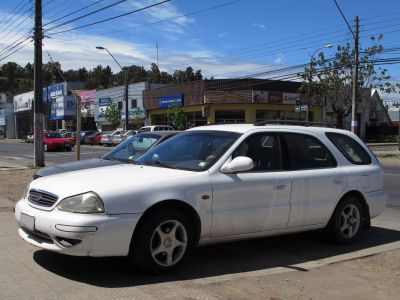
| Production: | 1998-2001 |
|---|---|
| Model Year: | 1998 |
| Length: | 4750 mm187.0 in |
| Width: | 1785 mm70.3 in |
| Height: | 1495 mm58.9 in |
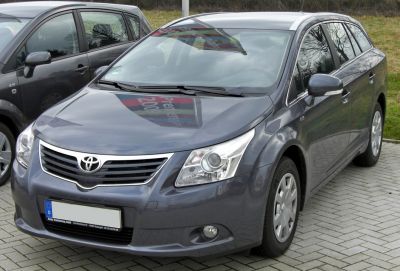
| Production: | 2009-2011 |
|---|---|
| Model Year: | 2009 |
| Length: | 4765 mm187.6 in |
| Width: | 1810 mm71.3 in |
| Height: | 1480 mm58.3 in |
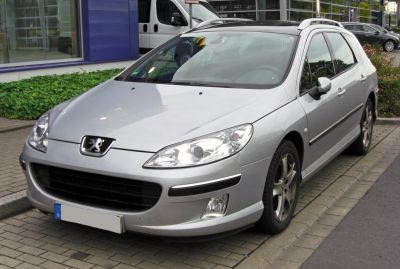
| Production: | 2006-2008 |
|---|---|
| Model Year: | 2006 |
| Length: | 4763 mm187.5 in |
| Width: | 1811 mm71.3 in |
| Height: | 1486 mm58.5 in |
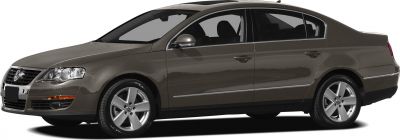
| Production: | 2010-2014 |
|---|---|
| Model Year: | 2010 |
| Length: | 4771 mm187.8 in |
| Width: | 2062 mm81.2 in |
| Height: | 1508-1516 mm59.4-59.7 in |
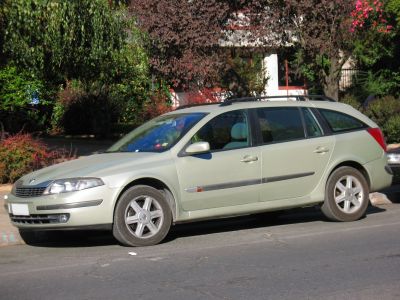
| Production: | 2001-2008 |
|---|---|
| Model Year: | 2001 |
| Length: | 4695 mm184.8 in |
| Width: | 1772 mm69.8 in |
| Height: | 1443 mm56.8 in |
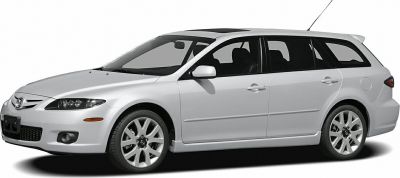
| Production: | 2007-2010 |
|---|---|
| Model Year: | 2008 |
| Length: | 4765-4785 mm187.6-188.4 in |
| Width: | 1795 mm70.7 in |
| Height: | 1490 mm58.7 in |
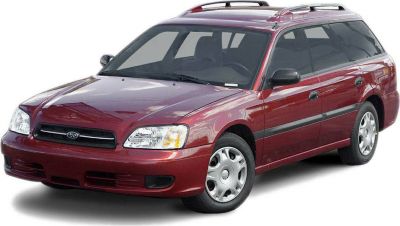
| Production: | 2003-2006 |
|---|---|
| Model Year: | 2004 |
| Length: | 4720 mm185.8 in |
| Width: | 1730 mm68.1 in |
| Height: | 1470 mm57.9 in |

| Production: | 2020-present |
|---|---|
| Model Year: | 2021 |
| Length: | 4755 mm187.2 in |
| Width: | 1795 mm70.7 in |
| Height: | 1500 mm59.1 in |
